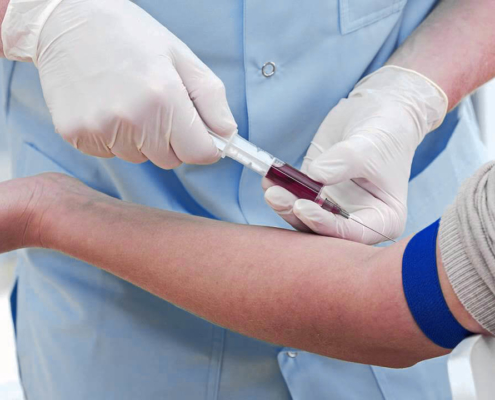Blood Disorder
Your blood is living tissue made up of liquid and solids. The liquid part, called plasma, is made of water, salts and protein. Over half of your blood is plasma. The solid part of your blood contains red blood cells, white blood cells and platelets.
Blood disorders affect one or more parts of the blood and prevent your blood from doing its job. They can be acute or chronic. Many blood disorders are inherited. Other causes include other diseases, side effects of medicines, and a lack of certain nutrients in your diet.
Types of blood disorders include:
- Platelet disorders, excessive clotting, and bleeding problems, which affect how your blood clots
- Anemia, which happens when your blood does not carry enough oxygen to the rest of your body
- Cancers of the blood, such as leukemia and myeloma
- Eosinophilic disorders, which are problems with one type of white blood cell.
Symptoms
Blood disorders can cause various symptoms in almost any area of the body. Most commonly, symptoms are caused by decreases in the blood components.
- Decreased red blood cells and hemoglobin can cause symptoms of anemia, such as fatigue, weakness, and shortness of breath.
- Decreased white blood cells or immune system proteins can cause recurrent fever and infections.
- Decreased platelets or blood clotting factors can cause abnormal bleeding and bruising.
Occasionally, symptoms may relate to increases in blood components.
- Increased red blood cells can cause headache and a red complexion (plethora).
- Increased white blood cells or immune system proteins can cause increased blood viscosity (thickening of the blood).
- Increased platelets or blood clotting factors can cause thrombosis (inappropriate excessive blood clotting).
Some blood disorders cause a person’s blood to become thickened by increased quantities of immune-related proteins, red blood cells, white blood cells, or platelets. This thickened (more viscous) blood may have difficulty passing through small blood vessels, decreasing blood flow to certain areas of the body, which is a serious condition called hyperviscosity syndrome. Affected people may experience symptoms such as shortness of breath, headaches, dizziness, and confusion. Hyperviscosity syndrome can occur in people who have multiple myeloma, in which it is caused by increased immune system proteins.
Blood disorders often cause symptoms that can also occur in other disorders. For example, the weakness and shortness of breath caused by anemia can be caused by other conditions that impair oxygen delivery to the body, such as heart or lung disorders. On the other hand, easy bruising, a symptom suggestive of a blood disorder, can be caused by conditions other than a blood disorder, especially disorders of the blood vessels or the use of various drugs such as aspirin.

